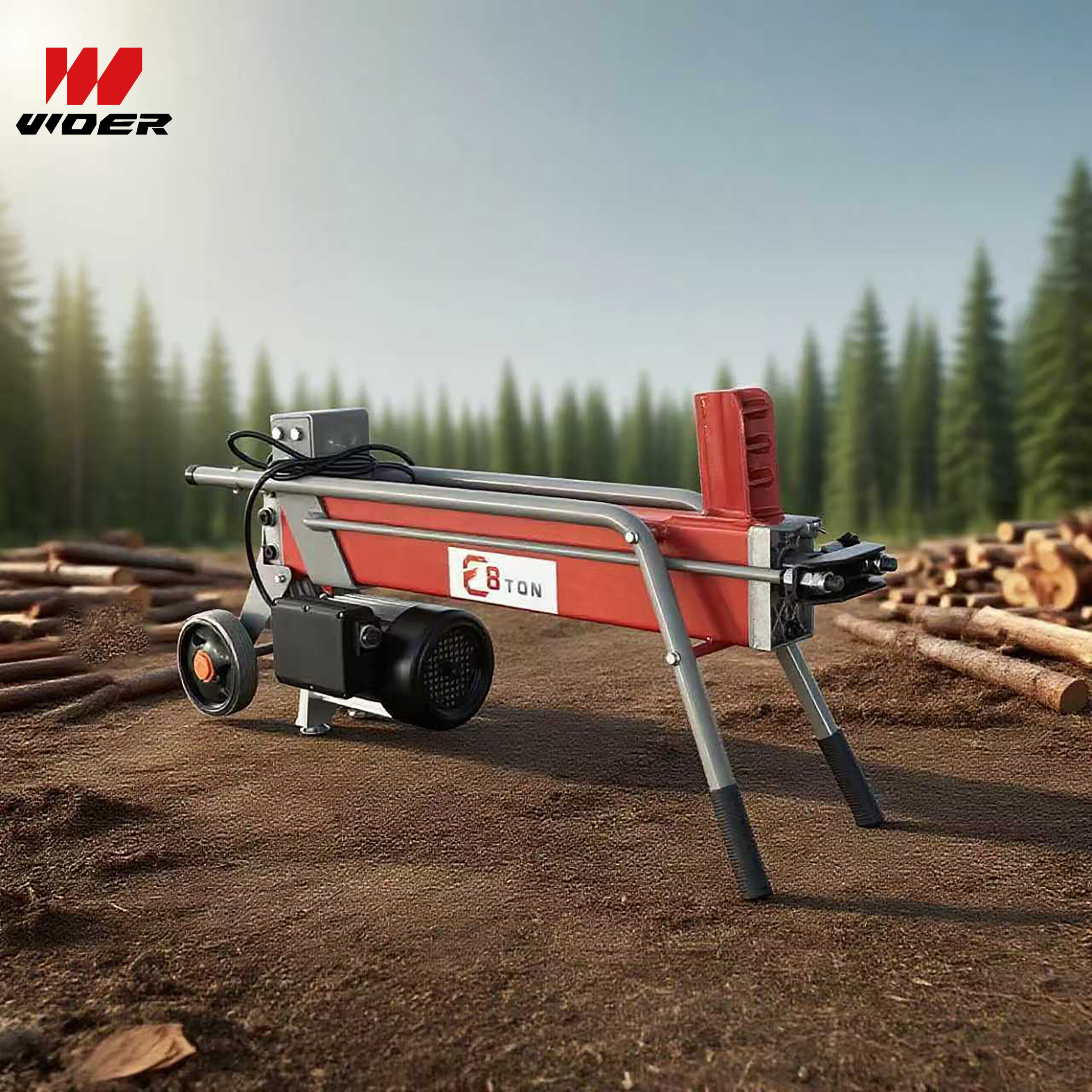Navigation
Contact us
Phone
Message

Selecting a safe wood log splitter requires more than price comparison — it demands a structured assessment of machine type, certified safety features, installation practices and operator competency. This guide highlights the top safety standards and practical checks for buyers, operators and decision-makers evaluating log splitter options including hydraulic, kinetic, electric and gasoline models.
Safety Standards Overview for Log Splitters
Log splitter safety rests on three pillars: machine design, compliance with recognized standards and workplace implementation. Key references include ISO principles for machinery safety (ISO 12100), applicable regional directives (CE for Europe), and industry standards such as ASTM and relevant national safety codes. Electric components should meet electrical safety approvals (UL, IEC/EN), while hydraulic systems require pressure-rated components and documented testing. Decision-makers should insist on verifiable evidence of conformity and risk assessments for any log splitter — whether a hydraulic log splitter, kinetic log splitter or electric log splitter.
Essential Design and Safety Features to Inspect
- Two-hand control systems and presence-sensing devices to prevent single-hand operation and reduce crush risks.
- Positive locking and interlock systems for maintenance and transport, enabling safe lockout/tagout procedures.
- Guarding around moving parts and the splitting wedge to reduce pinch and ejection hazards.
- Pressure relief valves, overload protection and rated hoses for log splitter hydraulic systems to prevent catastrophic failure.
- Battery and electrical protection (GFCI/RCBO, insulated connectors) on electric log splitter models.
- Stable base, secure mount or integrated ROPS-style guards for vertical log splitter configurations when used at scale.
- Clear labeling, operational instructions and visible emergency stop controls.
Hydraulic vs Kinetic vs Electric vs Gasoline — Safety Comparison
Understanding how different technologies change the risk profile is vital for procurement teams and operators. Each system type requires different safeguards and maintenance approaches.
Procurement and Pre-Installation Safety Checklist
- Verify certification and conformity: request documented compliance with ISO/EN/ASTM or applicable national standards, plus UL/CE marks for electrical components.
- Confirm design features: two-hand controls, emergency stops, guarding, rated hydraulic components, and grounding for electric units. For vertical units, check base anchoring provisions on the vertical log splitter.
- Assess site suitability: level, non-slip paved surface, clearance from foot traffic and combustibles, and appropriate drainage for hydraulic fluid containment.
- Plan for maintenance access: locks, inspection ports and clearances for routine servicing and hose replacement.
- Include operator PPE and training requirements in procurement contracts; ask suppliers for training materials and on-site commissioning support.
- Beware of low-cost offers: a “log splitter for sale cheap” may omit critical safety features or documentation — factor lifecycle and warranty into the decision.
- Request spare parts lists and mean-time-between-failure (MTBF) data for key items like pumps, valves and electrical controllers.
Installation, Training and Maintenance Best Practices
Safe operation relies on people as much as equipment. Implement documented training programs covering start-up, shutdown, emergency procedures and daily inspection checklists. Specific maintenance actions include periodic hydraulic fluid checks, hose and fitting inspections, electrical system testing and wedge/sharpness inspections for splitting efficiency. Establish lockout/tagout (LOTO) procedures for servicing, and maintain a maintenance log to support EEAT principles and audits.
Operational Controls and Human Factors
- Enforce two-person validation for critical tasks where appropriate and avoid single-operator exposure to hazardous zones.
- Control operator fatigue through shift planning; repetitive tasks with kinetic splitters can increase ergonomic risk.
- Post clear signage on safe log sizes, maximum pressures and prohibited maneuvers to reduce misuse.
Common Mistakes and How to Avoid Them
Buyers and operators commonly underestimate the importance of matching machine capability to the workload. Using an underpowered electric splitter for large hardwood increases jams and unsafe improvisations. Choosing a low-cost hydraulic model without certified pressure relief components raises failure risk. Avoid these by performing a needs analysis, insisting on third-party certification and budgeting for operator training and proper PPE.
Cost, Warranty and Total Cost of Ownership Considerations
Initial price is only one factor. Evaluate lifecycle costs including maintenance, downtime, spare parts and fuel or electricity consumption. Kinetic log splitters may offer faster cycle times and higher throughput, improving ROI in production environments. Hydraulic models often have longer service lives when properly maintained. For buyers comparing a log splitter for sale cheap, quantify the hidden costs that erode savings and request long-term warranty and service agreements.
Why These Standards Matter — Building Trust and Accountability
Adhering to documented safety standards reduces incident rates, improves uptime and supports procurement justification for capital expenditure. Technical evaluators and finance approvers gain confidence from verifiable test records, maintenance histories and supplier stability. Operators benefit from reliable, well-documented equipment; contract executors prefer suppliers who can show consistent compliance and timely spare parts delivery.
Conclusion and Call to Action
Purchasing the right wood log splitter involves balancing machine capability, safety compliance and lifecycle costs. Whether you evaluate a log splitter hydraulic machine for high-force tasks, an efficient kinetic log splitter for throughput, an eco-friendly electric log splitter or a portable log splitter gasoline unit, prioritize certified safety features, operator training and documented maintenance. Avoid decisions driven solely by upfront price; a log splitter for sale cheap often represents higher risk and long-term expense.
If your team requires a tailored safety checklist, on-site risk assessment or supplier pre-qualification support, contact our experts for a pragmatic evaluation and procurement roadmap. We combine field experience, industry compliance knowledge and practical training resources to help you acquire the safest, most cost-effective wood log splitter — from compact electric log splitter models to heavy-duty hydraulic log splitter and vertical log splitter configurations.

This stunning beach house property is a true oasis, nestled in a serene coastal community with direct access to the beach.
Contact
West Street, Melbourne Victoria 3000 Australia